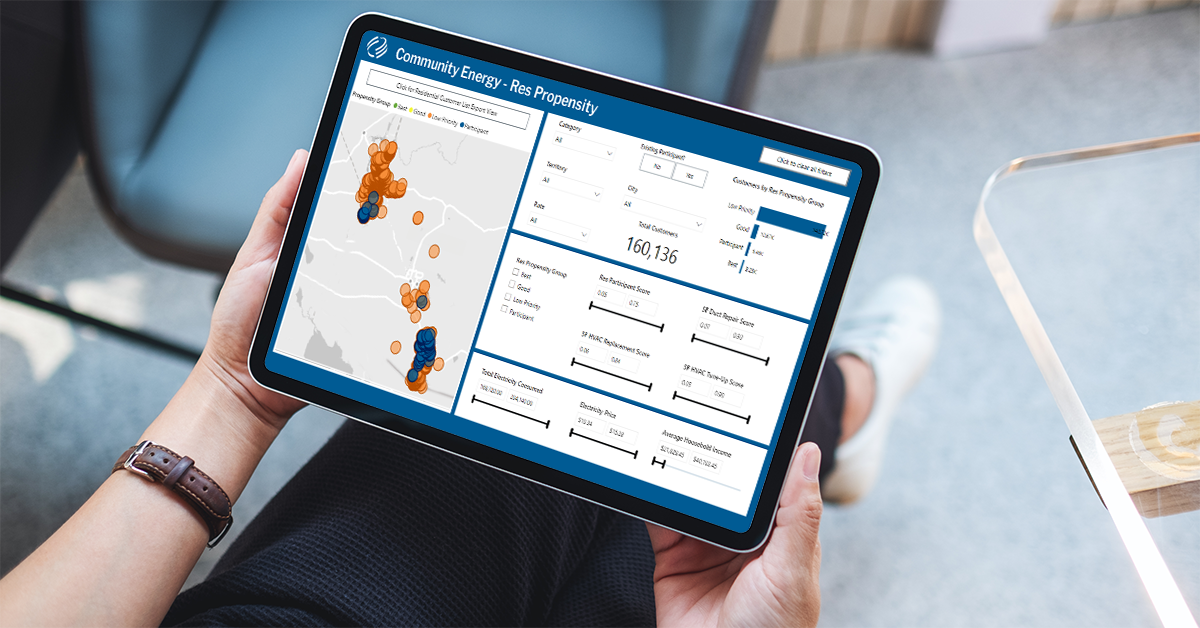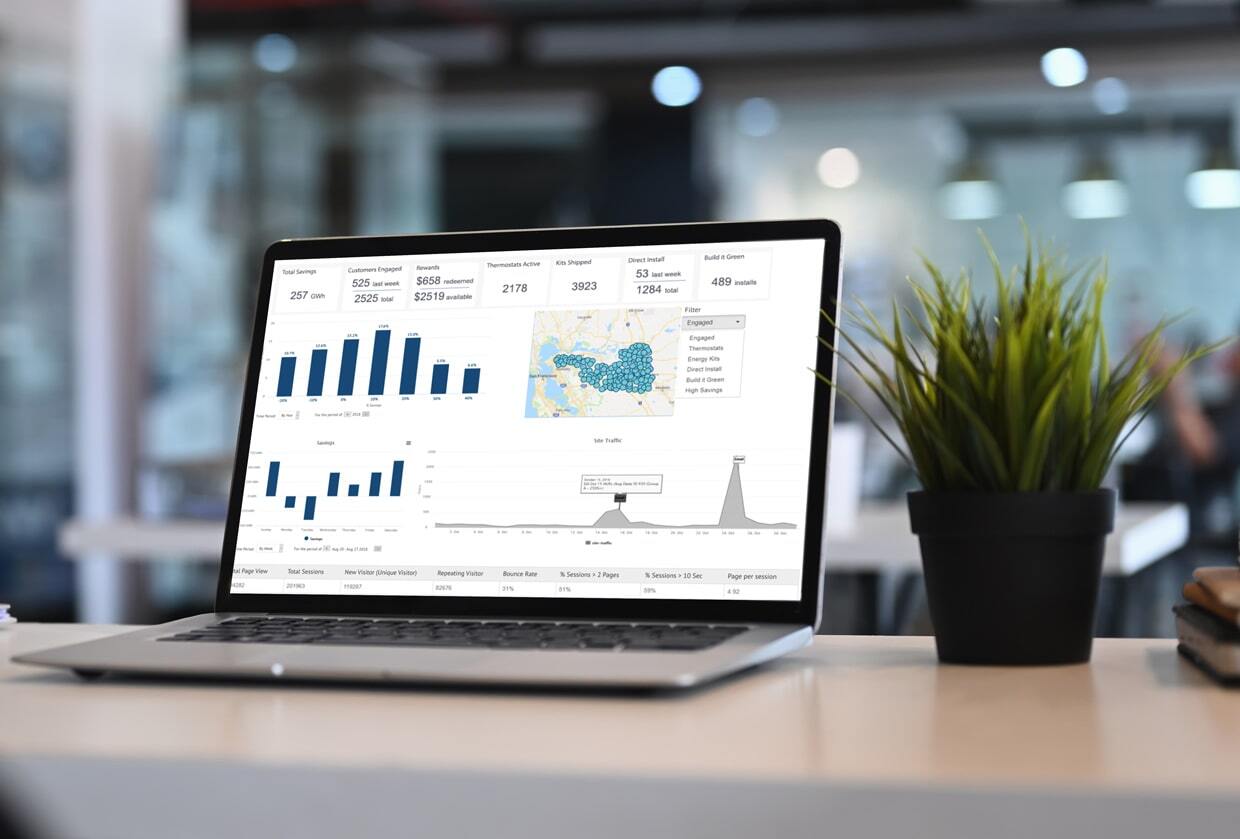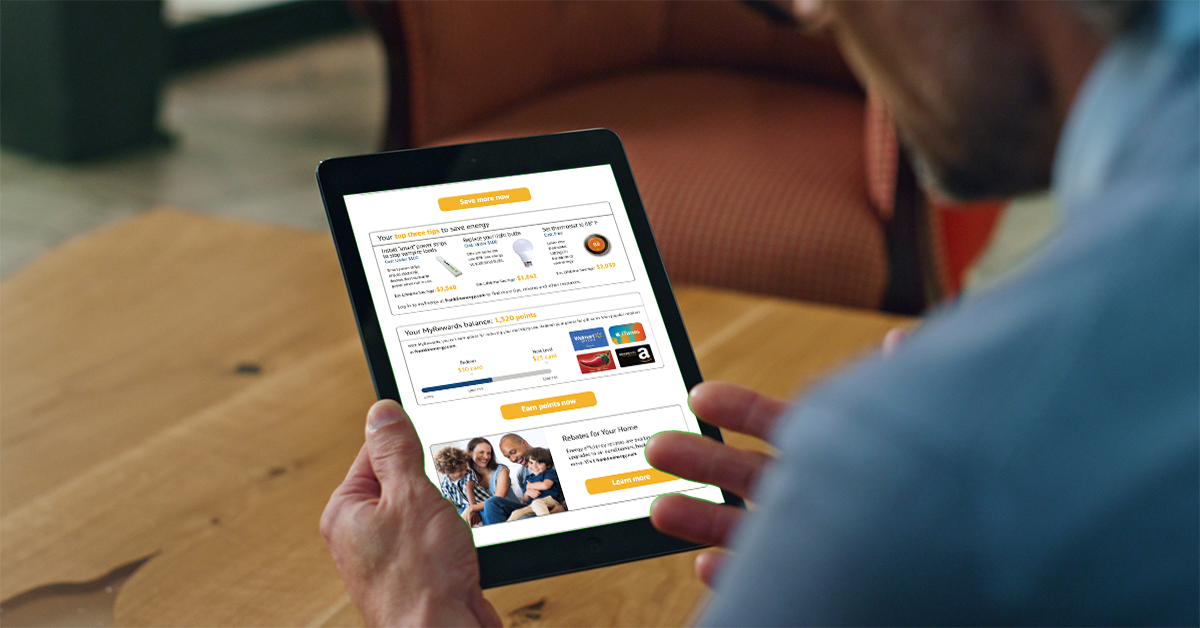AI-Driven Propensity Models Help Utilities Optimize Energy Programs
January 13, 2025 •Chris Brucher

According to the Energy Information Agency (EIA), the average investor-owned electric utility in the US serves around 650,000 residents. Half of those residents, as the popular marketing refrain goes, are perfect candidates to participate in their utility’s clean energy and energy efficiency programs. Unfortunately, most electric utilities just don’t know which half are great candidates and which aren’t. As a result, they face the possibility of overspending on marketing their programs by targeting and engaging the wrong audience.
That was yesterday. Today, there’s an AI-driven propensity model for that.
What is a Propensity Model?
A propensity model is a statistical method used to predict the likelihood of a specific event occurring in the future by analyzing historical data and patterns identified in past behaviors. Statisticians Paul Rosenbaum and Donald Rubin introduced the concept in a 1983 article that established the propensity score—the probability that an individual will receive a treatment based on their characteristics.
Over the last four decades, propensity models have helped businesses anticipate customer actions and make informed decisions on marketing strategies and resource allocation. It’s only recently, however, that artificial intelligence (AI) has infused propensity models with the ability to scale data-driven insights and optimize marketing performance with advanced audience segmentation. Electric utilities can use these evolved models to optimize the time, effort, and spending required to increase participation in their energy efficiency and load management programs.
Target the Right Customers
Propensity models can segment customers based on their likelihood to respond to energy-saving or load-shifting initiatives. This means that instead of casting a wide net and contacting all customers, utilities can optimize their marketing spend and outreach by focusing their efforts on prospects who are more likely to enroll in energy programs. By analyzing past participation in similar programs, assessing previous energy-saving behaviors such as usage patterns or openness to adopt smart home technologies, or comparing a customer profile to similar past participants, propensity models help utilities identify which factors are associated with customer participation in the program. This lets utilities target specific customers whom the model has identified as more likely to adopt new energy-saving or -shifting behaviors such as equipment upgrades or program enrollment.
Optimize Marketing Campaigns for Maximum Return on Spend
With insights from propensity modeling, utilities can create targeted campaigns based on customer preferences and behaviors. For example, if a customer has been identified as likely to respond to incentives such as rebates, bill savings, or participation credits, the utility can send them tailored messaging and offers, increasing the chances of engagement and enrollment. Propensity models help allocate marketing budgets more effectively by identifying which customer segments are most likely to engage, thereby minimizing wasted resources on less promising prospects.
Enhance Trade Ally Networks
Electric utilities that are successful with clean energy and energy efficiency programs often rely on a vast network of trade allies that install energy-efficient and load management equipment in homes. Propensity models can enhance the value these networks provide by aligning trade allies with a specific geographic location and the needs of eligible, high-propensity customers within that defined area. Customers benefit because qualified experts are performing the work in their homes. Trade allies are happy because they’re getting qualified leads and are able to work more efficiently. Happy customers and trade allies have a propensity for being loyal to the program and the utility that offers it.
Improve Customer Retention
Propensity models can predict which enrolled customers are at risk of dropping out of a program or becoming disengaged. By identifying these customers early, utilities can take proactive steps, such as offering additional support or incentives, or suggesting a substitute participation path, to retain participants. Insights from propensity models can help guide program design with utilities, tailoring offerings to maximize customer satisfaction and retention. This may involve adjusting program parameters (e.g., incentives, billing structures, technology options) based on customer preferences and tendencies.
An Example of a Propensity Model in Action
We’ve highlighted some of the benefits utilities can realize with propensity models. Let’s take a practical look at how one could work for you. Imagine your utility is about to launch an energy efficiency program and uses a propensity model to predict which customers in its database are most likely to participate. The model identifies customers with the following characteristics:
- Customers with smart thermostats or other energy-efficient appliances
- Customers who have responded to energy-saving messages in the past
- Customers with high energy usage but also flexible consumption patterns (for example, they are able to shift energy use during off-peak times)
By targeting these customers with personalized outreach—perhaps offering tailored rebates, customized notifications, or simple instructions for participating—your utility increases the chances of successful enrollment while minimizing the cost of attracting non-interested customers.
The right candidates for your utility’s clean energy and energy efficiency programs are out there. With an AI-driven propensity model in your toolkit, you can discover exactly who they are, where they are, and what motivates them to participate and remain happily loyal.
Ready to connect with your customers in a more personalized, meaningful, and cost-effective way? Reach out to continue the conversation about our propensity models and load management programs.

.png)
.png)


.png)

